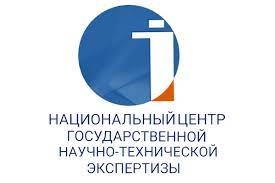UNIVERSAL ELECTRONIC DICTIONARY OF THE KAZAKH LANGUAGE – WEB-BASED TOOL OF THE NATIONAL CORPUS OF THE KAZAKH LANGUAGE
https://doi.org/10.55491/2411-6076-2025-3-187-201
Abstract
The article is devoted to the structure and content of the universal electronic dictionary of the Kazakh language as a web-based tool of the National Corpus of the Kazakh language, ways of its development and use. The article discusses the differences between electronic dictionaries and published dictionaries, their specific features and difficulties, types with reference to scientific literature. Using the qualitative description method, descriptions were given and electronic dictionaries were analyzed. Domestic electronic dictionaries were divided into types such as web dictionaries, which collected electronic versions of published dictionaries, web dictionaries developed on electronic platforms for users, and summary dictionaries to provide brief information about each electronic dictionary. A general review of the electronic dictionaries of the Friendship of Independent States member states has been conducted. Foreign electronic dictionaries were analyzed in terms of content, structure, and features, divided into universal, explanatory, summary, historical, slang, visual, and translation types. Taking into account this domestic and foreign experience, the course of development, program structure, specific features and universality of the “Universal Electronic Dictionary of the Kazakh language” developed by the A. Baitursynuly Institute of Linguistics was described. This dictionary serves as a web-based tool for the National corpus of the Kazakh language. Because the National corpus and the web dictionary are a digital resource that complement each other with linguistic data. The comparative analysis revealed the similarity and difference of this universal dictionary from other Russian electronic dictionaries.
Keywords
About the Authors
Zh. YesskendirKazakhstan
Zharas Yesskendir, Doctoral student
Almaty
S. Kulmanov
Kazakhstan
Sarsenbai Kulmanov, Candidate of Philological Sciences, Professor
Almaty
N. Kairanbayev
Kazakhstan
Nurlan Kairanbayev
Almaty
References
1. Abdirasilov, Ye. (2005) Qazaq terminografijasynyng zhujesi. Astana, 208 b. [Abdrasilov, Ye. (2005) System of Kazakh terminology. Astana, 208 p.] (in Kazakh)
2. Akimova, E.N., Akimov, V.L. (2013) Jelektronnyj slovar' dialektnyh frazeologizmov. Vestnik NNGU. No.6-2. S. 1-3.
3. [Akimova, E.N., Akimov, V.L. (2013) Electronic dictionary of dialect phraseological units. Bulletin of the National Research University. No.6-2. P. 1-3.] (in Russian)
4. Critchfeld, T.S. (2017) Visuwords: A handy online tool for estimating what nonexperts may think when hearing behavior analysis jargon. Behavior Analysis in Practice. No.10. P. 318-320. https://doi.org/10.1007/s40617-017-0173-0 (in English)
5. Efremova, A.N. (2015) Kompleksnyj jelektronnyj slovar': osobennosti projektirovanija. Izvestija RGPU im. A.Gercena. No.178. S. 40. [Efremova, A.N. (2015) Comprehensive electronic dictionary: design features. Bulletin of the Russian State Pedagogical University named after A. Herzen. No.178. P. 40.] (in Russian)
6. Fesenko, O.P., Lauhina, S.S. (2015) Jelektronnye slovari kak produkt sovremennoj leksikografii. Omskij nauchnyj vestnik. No.4(141). S. 46-47. [Fesenko, O.P., Laukhina, S.S. (2015) Electronic dictionaries as a product of modern lexicography. Omsk Scientific Bulletin. No.4(141). P. 46-47.] (in Russian)
7. Karabuta, O., Mandych, T., Lemeshchuk, O. (2020) Electronic dictionary of sports metaphors as an instrument to develop the ukrainian computer lexicography. Journal of Information Technologies in Education (ITE). No.44. P. 42-48. https://doi.org/10.14308/ite000725 (in English)
8. Karami, S., Riasati, M.J. (2023) A Study of Electronic Dictionary Use and Attitudes among Iranian Students of Translation during COVID‐19 Pandemic. Education Research International. P. 2. https://doi.org/10.1155/2023/7616256 (in English)
9. Kobdenova, G. (2013) Jelektrondy sozdik – zaman talaby. [Kobdenova, G. (2013) Electronic dictionary – a requirement of the times]. URL: https://anatili.kazgazeta.kz/news/16025 (review date: 03.05.2024). (in Kazakh)
10. Kuz'mina, R.V. (2021) Jelektronnyj slovar' Oxford English Dictionary kak osnova projektnoj dejatel'nosti studentov. Vestnik Gumanitarnogo instituta. No.2. S. 179-186. [Kuzmina, R.V. (2021) Electronic dictionary Oxford English Dictionary as the basis of students' project activity. Bulletin of the Humanitarian Institute. No.2. P. 179-186.] https://doi.org/10.6060/BHIISUCT2021_179 (in Russian)
11. Mad'jarova, G.A., Bajsalbaeva, K.N., Ibrajymqyzy, A. (2021) Sravnitel'nyj analiz sushhestvujushhih jelektronnyh slovarej. Statistics, account and audit. 320 s. [Madyarova, G.A., Baisalbayeva, K.N., Ibraiymkyzy, A. (2021) Comparative analysis of existing electronic dictionaries. Statistics, account and audit. 320 p.]. https://doi.org/10.51579/1563-2415.2021-1.44 (in Russian)
12. Makarych, M.V., Popova, Yu.B., Shved, M.O. (2020) Electronic Lexicography: Traditional and Modern Approaches. Science and Technique. Vol. 19, No.5. P. 424. https://doi.org/10.21122/2227-1031-2020-19-5-421-427 (in English)
13. Marus, M.L. (2015) Sovremennye mnogojazychnye jelektronnye slovari. Jelektronnyj nauchno-metodicheskij zhurnal Omskogo GAU. No.3(3). S. 68-70. [Marus, M.L. (2015) Modern multilingual electronic dictionaries. Electronic scientific and methodological journal of Omsk State Agrarian University. No.3(3). P. 68-70.] (in Russian)
14. Morel' Morel', D.A., Shatilina, S.I., Shashkin, L.M. (2008) Jelektronnyj slovar' kak sredstvo obuchenija i issledovatel'skij resurs. Al'manah sovremennoj nauki i obrazovanija. Tambov: Gramota. No.8 (15): v 2-h ch. Ch. I. S. 132-133. [Morel Morel, D.A., Shatilina, S.I., Shashkin, L.M. (2008) Electronic dictionary as a teaching tool and research resource. Almanac of Modern Science and Education. Tambov: Diploma. No.8(15): in 2 hours. Part 1. I. C. P. 132-133.] (in Russian)
15. Qulmanov, S.Q., Bisengali, A.Z., Shulenbaev, N.Q., Omarova, A.D. (2024) Qazaq cifrlyq terminologijasy: terminologijalyq ishkorpus azirleu tazhiribesi (metamatindik zhane terminologijalyq belgilenimder parametrlеri). TILTANYM. (1): 155-165. [Kulmanov, S.K., Bissengali, A.Z., Shulenbayev, N.K., Omarova, A.D. (2024) Kazakh digital terminology: experience in developing a terminological subcorpus (parameters of meta-textual and terminological designations). TILTANYM. (1): 155-165. https://doi.org/10.55491/2411-6076-2024-1-155-165 (in Kazakh)
16. Sarmila, N., Yauri, A.M., Resyadi, H. (2022) The Effectiveness of Electronic Dictionaries in Learning Vocabulary at Indonesia Junior High School Context. International Journal of Research on English Teaching and Applied Linguistics. T. 3. No.2. P. 40-43. https://doi.org/10.30863/ijretal.v3i2.3903 (in English)
17. Vepreva, T.B. (2017) Rasshirenie slovarja magistrantov nejazykovyh obespechivajut podgotovku pri pomoshhi onlajnresursov. Vestnik Cherepoveckogo gosudarstvennogo universiteta. No.6(81). S. 165. [Vepreva, T.B. (2017) Expanding the vocabulary of non-linguistic undergraduates provides training using online resources. Bulletin of Cherepovets State University. No.6 (81). P. 165.] (in Russian)
Review
For citations:
Yesskendir Zh., Kulmanov S., Kairanbayev N. UNIVERSAL ELECTRONIC DICTIONARY OF THE KAZAKH LANGUAGE – WEB-BASED TOOL OF THE NATIONAL CORPUS OF THE KAZAKH LANGUAGE. Tiltanym. 2025;(3):187-201. (In Kazakh) https://doi.org/10.55491/2411-6076-2025-3-187-201

















